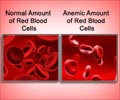
By allowing rapid diagnosis and more convenient monitoring of patients with chronic anemia, the device could help patients receive treatment before the disease becomes severe, potentially heading off emergency room visits and hospitalizations. Anemia, which affects two billion people worldwide, is now diagnosed and monitored using blood tests done with costly test equipment maintained in hospitals, clinics or commercial laboratories.
Because of its simplicity and ability to deliver results without electricity, the device could also be used in resource-poor nations.
A paper describing the device and comparing its sensitivity to gold-standard anemia testing was published August 30 in The Journal of Clinical Investigation. Development of the test has been supported by the FDA-funded Atlantic Pediatric Device Consortium, the Georgia Research Alliance, Children's Healthcare of Atlanta, the Georgia Center of Innovation for Manufacturing and the Global Center for Medical Innovation.
"Our goal is to get this device into patients' hands so they can diagnose and monitor anemia themselves," said Dr. Wilbur Lam, senior author of the paper and a physician in the Aflac Cancer and Blood Disorders Center at Children's Healthcare of Atlanta and the Department of Pediatrics at the Emory University School of Medicine.
"Patients could use this device in a way that's very similar to how diabetics use glucose-monitoring devices, but this will be even simpler because this is a visual-based test that doesn't require an additional electrical device to analyze the results."
Advertisement
Source-Eurekalert













